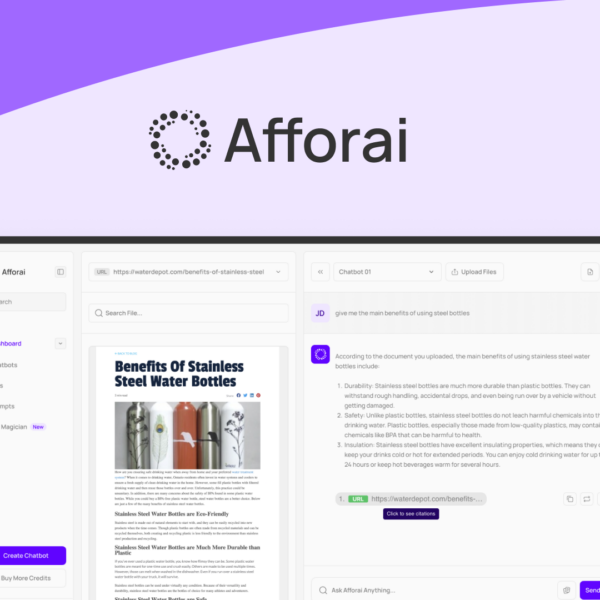CRM pricing is influenced by factors such as user count, feature needs, integration options, and support levels. Businesses can choose between free and paid solutions, with subscription models often providing flexibility. Understanding these elements helps organizations select the right CRM for their budget and requirements.
CRM pricing plays a crucial role in how organizations manage customer relationships. With a plethora of options available, from free software to high-end solutions, businesses must understand the nuances of costs involved to choose wisely. Whether you’re a startup or an established firm, grasping the essentials of CRM pricing can significantly impact your success.
The Basics of CRM Pricing
The basics of CRM pricing are essential for businesses looking to enhance their customer relationship management strategies. Understanding how different pricing models work can help you make informed decisions. Typically, CRM systems come in various pricing structures including subscription-based, one-time payments, and tiered pricing based on features.
Subscription-Based Pricing
This model charges a monthly or yearly fee for access to the CRM software. It often includes updates and support as part of the service. Businesses enjoy predictable costs, making budget planning easier.
One-Time Payment
Some CRMs offer a one-time purchase option. This requires a larger upfront investment. While you own the software, you might still need to pay for updates or additional features in the future.
Tiered Pricing Models
Many CRMs provide tiered pricing based on the features you need. These tiers can range from basic functionalities to advanced tools for larger operations. Understanding what you get at each level is crucial to avoid overspending on unnecessary features.
Freemium Options
Freemium models allow businesses to use a basic version of the CRM at no cost. However, advanced features may come with a price. It’s a great way to explore the software before committing financially.
Ultimately, understanding CRM pricing exists across multiple models is vital for making choices aligned with your budget and needs. Evaluate what works best for your business and ensure you’re maximizing the return on investment.
Factors Influencing CRM Costs

Factors influencing CRM costs can significantly affect how businesses choose their customer relationship management solutions. Understanding these elements helps in making informed decisions to ensure the best fit for your organizational needs.
Number of Users
The cost of a CRM often depends on the number of users. Most providers charge per user per month. Hence, businesses with a larger team may incur higher costs. It’s important to evaluate how many team members will need access to the CRM.
Features and Functionality
CRM solutions offer a range of features, from basic contact management to advanced analytics and automation tools. Generally, the more features included, the higher the price. It’s crucial to assess which features are necessary for your business operations to avoid paying for extras that may not be used.
Integration with Other Tools
Many businesses rely on multiple software systems. The ability of a CRM to integrate smoothly with existing tools can influence costs. Some CRMs may charge additional fees for integrations, while others include them in their pricing. Understanding integration costs helps to manage your overall budget.
Customization Options
Customization can enhance the usability of a CRM but often comes with additional costs. If your business requires tailored solutions, be prepared to pay extra for custom integrations and features. Evaluating your customization needs ahead of time can help control expenses.
Support and Training
The level of support and training provided by the CRM vendor can also impact costs. Some solutions come with comprehensive support services included in the price, while others may charge for consultation or training sessions. Assess your team’s familiarity with CRM systems to determine additional support needs.
Free vs. Paid CRM Software
Free vs. Paid CRM software is a crucial consideration for businesses of all sizes. Understanding the differences can help you choose the right solution based on your needs and budget.
Free CRM Software
Free CRM software can be a great starting point for small businesses or startups. These solutions typically offer essential features like contact management, basic reporting, and limited storage. However, they often come with restrictions. Many free CRMs have limited user access, fewer integrations, and may lack advanced functionalities that can aid future growth.
Advantages of Free CRMs
One major advantage of free CRM software is cost savings. It allows businesses to use CRM tools without incurring initial expenses. Additionally, many free versions are user-friendly, making them suitable for teams new to CRM systems.
Limitations of Free CRMs
Despite the benefits, free CRMs have significant limitations. They may not offer sufficient support, and the features could fall short as your business expands. Businesses may face challenges in scalability and customization, which can become a problem as they grow.
Paid CRM Software
Paid CRM options typically provide a more comprehensive set of features. They often include advanced analytics, automation tools, integration capabilities, and better customer support. This is beneficial for businesses with more complex needs resulting from growth.
Advantages of Paid CRMs
Paid CRMs deliver enhanced functionality, customization options, and professional support. This can lead to better user adoption and overall performance. Additionally, many vendors offer trial periods that allow businesses to evaluate the CRM before full implementation.
Choosing the Right Option
When deciding between free and paid CRM software, consider your business size, budget, and future growth plans. If you’re just starting or have a small team, a free solution can be effective. However, as your business grows, investing in a paid CRM may provide the scalability and features needed for success.
Budgeting for CRM Solutions

Budgeting for CRM solutions is an essential aspect for businesses looking to implement effective customer relationship management. Understanding how to allocate funds wisely can lead to better decision-making and significant returns on investment.
Assess Your Needs
The first step in budgeting for a CRM solution is to identify your specific needs. Determine the number of users, essential features, and integration requirements. This step will help narrow down your choices and avoid overspending on unnecessary features.
Set a Budget Range
Once you understand your needs, set a budget range. Consider both initial costs and ongoing expenses, such as subscription fees and maintenance costs. A clear budget helps in selecting a CRM that fits within your financial capacity.
Include Hidden Costs
When budgeting, don’t forget to include potential hidden costs. These can include extra fees for additional users, upgrades, or customizations. Training expenses for your staff and support costs should also be part of the budget to avoid surprises later.
ROI Consideration
Evaluating the potential return on investment (ROI) is key when budgeting for a CRM. Look at how the CRM can enhance productivity, improve sales, and reduce customer turnover. Calculating potential ROI can justify the costs involved and help you make informed decisions.
Review and Adjust Regularly
Once the CRM is in place, continually review your budget and expenses. Adjust your financial allocations as required based on your usage and any changes in business needs. Regular assessments help to ensure you are maximizing value from your CRM investment.
The Future of CRM Pricing Trends
The future of CRM pricing trends looks dynamic as businesses adapt to changing technologies and customer needs. Understanding these trends can help companies make better decisions when selecting CRM solutions.
Shift Towards Subscription Models
One significant trend is the continued shift towards subscription-based pricing. Businesses prefer this model for its predictable costs and regular updates. This allows them to scale their use of CRM solutions based on their evolving needs without the burden of large upfront payments.
Increased Customization and Flexibility
Another trend is the demand for increased customization in pricing plans. Companies are looking for CRMs that offer flexible pricing structures tailored to their specific needs. This can include tiered plans based on features and the ability to add or remove services as necessary.
Integration of AI and Automation Tools
As businesses embrace artificial intelligence, CRM pricing is reflecting this integration. Many platforms are now offering AI-powered features as part of their standard packages, often at a premium cost. Firms value these advancements for the boosted efficiency and analytics they bring.
Emphasis on User Experience
Pricing trends are becoming more user-centric, with a focus on user experience. Companies are willing to pay more for CRMs that offer intuitive interfaces and exceptional customer support. This trend emphasizes the importance of not just function, but also overall usability.
Freemium Models Gaining Popularity
Finally, freemium models are gaining traction. These models allow users to access basic features for free, with the option to upgrade to premium features. This strategy attracts a wider audience and lets businesses evaluate the software before committing financially.
In Summary: Choosing the Right CRM Pricing
Understanding CRM pricing is crucial for businesses looking to improve their customer relationships effectively. With various options available, from free to paid solutions, it’s essential to assess your specific needs and budget.
As you consider factors like the number of users, necessary features, and potential ROI, make informed choices that align with your business goals.
By keeping an eye on future pricing trends, you can select a CRM that not only fits your current requirements but also adapts as your business grows.
Ultimately, investing in the right CRM solution can help you achieve better customer satisfaction and drive business success.
FAQ – Frequently Asked Questions about CRM Pricing
What factors affect the cost of a CRM system?
Factors such as the number of users, features and functionalities needed, integration capabilities, and the level of customer support all influence the cost of a CRM.
Are free CRMs worth using?
Free CRMs can be a good starting point for small businesses. However, they may have limitations in features and support, which could hinder growth.
How can I determine if a CRM solution is a good fit?
Assess your business needs, set a budget, and consider conducting a trial to evaluate if the CRM meets your requirements before committing.
What are subscription models in CRM pricing?
Subscription models allow businesses to pay a fixed fee on a monthly or annual basis for access to the CRM, offering predictable costs and regular updates.
What benefits do customization options in CRMs provide?
Customization allows businesses to tailor the CRM to their specific needs and workflows, improving usability and overall effectiveness.
How do I budget for a CRM solution?
Start by assessing your needs, set a budget range, include potential hidden costs, and evaluate the expected ROI to make informed financial decisions.




